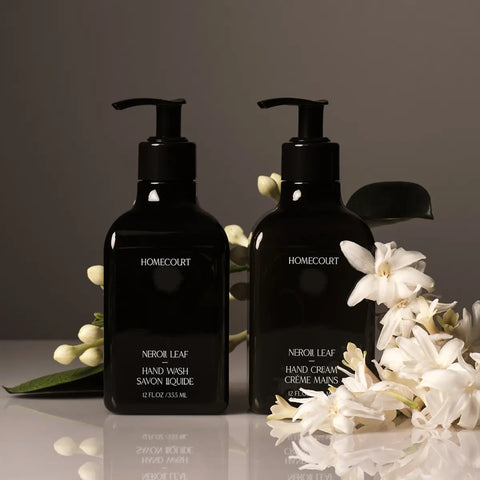Tips on Choosing the Best Hand Cream for Dry and Cracked Hands

Dry and cracked hands can be both uncomfortable and unsightly, which is why choosing the best hand cream for your specific needs is crucial. This comprehensive guide will explore the common causes of dry and cracked hands, the importance of selecting the best hand cream, and the key factors to consider when making your choice. By understanding the essential qualities of a great hand cream, you can effectively soothe, heal, and protect your hands, keeping them soft and healthy.

Common Causes of Dry and Cracked Hands
Environmental Factors
The health of your hands is significantly influenced by various environmental factors. Cold weather is a primary culprit, as lower temperatures tend to reduce humidity levels, leading to dry air that can dehydrate the skin. This environment is harsh on hands, often causing them to become dry, rough, and cracked. Additionally, exposure to harsh chemicals, such as those found in cleaning products or industrial solvents, can further exacerbate the dryness by stripping away the skin’s natural oils. Frequent hand washing, especially with hot water and harsh soaps, also contributes significantly to moisture loss. This combination of factors can leave the skin vulnerable to cracking, peeling, and other forms of irritation. Protecting your hands by wearing gloves during cold weather or while using chemicals and choosing mild, moisturizing soaps can help mitigate these effects and maintain your skin’s natural balance.
Lifestyle Factors
Certain lifestyle choices play a crucial role in determining the health of your hands, particularly when it comes to preventing dryness and cracking. The specific activities you engage in, and even your daily habits, can either safeguard your skin or expose it to harm. Here are some common scenarios that can affect your hand health and practical steps to mitigate their effects:
- Manual Labor: Working in environments where manual labor is required, such as in gardening, construction, or mechanical jobs, poses significant challenges to maintaining healthy hands. These tasks often expose your hands to harsh conditions, including abrasive materials and harmful chemicals, which can aggressively strip away the skin's natural oils and protective barrier. To mitigate these effects, it is crucial to wear gloves that are designed to resist these specific hazards. Durable gloves, made from materials suitable for the type of work being done, act as a shield against both mechanical injuries and chemical damage, thereby preventing your skin from becoming dry and cracked.
- Frequent Dishwashing: The task of washing dishes frequently exposes your hands to hot water and harsh detergents, which are designed to cut through grease and food residue. This repeated exposure can significantly deplete the natural oils and moisture in your skin, leading to dryness, irritation, and an increased risk of cracking. The best preventative measure is to wear rubber or waterproof gloves during dishwashing. This not only helps in keeping your hands dry but also protects them from the drying effects of dish soap, thus maintaining the moisture balance necessary for healthy skin.
- Dehydration: Proper hydration is a cornerstone of good skin health, affecting its elasticity, smoothness, and overall resilience. Inadequate fluid intake can lead to dehydration, directly impacting the skin on your hands by making it more susceptible to dryness and cracking. To ensure that your skin remains well-hydrated and elastic, it is important to drink sufficient water throughout the day. The generally recommended daily water intake is around eight 8-ounce glasses, though this may vary based on individual health needs and lifestyle. Staying well-hydrated helps your skin to stay moist and more capable of withstanding dry and harsh conditions.
Incorporating these protective measures into your routine can make a significant difference in maintaining the health and integrity of your skin. Regularly using gloves for protection and hydrating adequately are simple yet effective strategies to prevent the adverse effects of environmental and physical stressors on your hands. By being proactive about your hand care, you can keep your skin supple and prevent the discomfort associated with dryness and cracking.
Medical Conditions
Dry and cracked hands can sometimes indicate underlying medical issues. Skin conditions such as eczema and psoriasis often manifest on the hands, leading to excessive dryness, itching, and cracked skin. These conditions disrupt the normal barrier function of the skin, making it more difficult to retain moisture. Additionally, thyroid disorders can alter skin texture and moisture levels, often resulting in dry, coarse skin that is prone to cracking. If you notice persistent dryness and cracking that does not improve with regular moisturizing and protection, it might be wise to consult a healthcare professional. A doctor can assess whether these symptoms are due to a medical condition and recommend appropriate treatments or lifestyle adjustments to alleviate the symptoms and protect your hand health.
Importance of Selecting the Right Hand Cream
When it comes to taking care of dry, cracked skin on your hands, the right-hand cream can make all the difference. Not only does it provide instant relief from the discomfort that comes with dry skin, but it also helps to speed up the healing process. The key is to choose a cream that is specifically formulated to nourish and moisturize your skin.
Your skin needs certain nutrients and moisture to repair itself and keep it healthy, and the best hand cream for dry skin provides just that. Not only will it soothe your hands in the moment, but it will also work to improve the overall condition of your skin. By using a moisturizing hand cream regularly, you can help prevent future dryness and cracking, ensuring that your hands always feel soft, smooth, and comfortable.
Key Factors to Consider When Choosing Hand Cream
Nourishing Ingredients
When it comes to healing dry and cracked hands, using a natural hand cream with nourishing ingredients is essential. Choosing a cream that combines key nourishing ingredients can make a significant difference in the health and appearance of your skin. Here are some essential components to look for in hand creams:
- Humectants: Ingredients like glycerin or hyaluronic acid are vital for their ability to attract and retain moisture in the skin. Glycerin, a common skincare ingredient, is a powerful humectant that draws water from the deeper layers of the skin and the environment into the outer layer of the skin, keeping it hydrated and relieving dryness and irritation. Hyaluronic acid, similarly, can hold up to 1000 times its weight in water, significantly enhancing skin hydration and elasticity. Regular application of a hand cream rich in these ingredients helps rehydrate dry patches and calm irritated skin, making it feel smoother and more comfortable.
- Emollients: Shea butter and lanolin are excellent examples of emollients that are essential in hand creams for dry skin. Shea butter is derived from the nuts of the shea tree and is rich in fatty acids and vitamins, which are integral for softening skin. It also has anti-inflammatory properties that help soothe irritated skin. Lanolin, a natural oil found in sheep's wool, closely resembles the oils naturally produced by human skin. It acts as a barrier, preventing further moisture loss and protecting the skin from environmental stresses. Emollients like these not only enhance the skin's texture and moisture retention but also leave your hands feeling silky and nourished.
- Natural Oils: Jojoba and almond oil are especially beneficial for dry, cracked hands. Jojoba oil is unique in that its chemical structure closely mimics the sebum naturally produced by our skin, which means it can deeply penetrate and deliver hydration where it's most needed without leaving a greasy residue. Almond oil is packed with vitamin E, omega-3 fatty acids, and antioxidants, which help repair damage to the skin's barrier, improve moisture retention, and protect the skin from oxidative stress. These oils help maintain hydration and elasticity, making them ideal for preventing and treating dry skin conditions.
Incorporating a hand cream with these ingredients into your daily skincare routine can drastically improve the condition of dry, cracked hands. As a result, your hands remain soft, healthy, and resilient against environmental stresses and frequent washing. This proactive approach to hand care is essential for maintaining the skin’s integrity and preventing discomfort from dryness and cracking.

Fast-absorbing Formula
The best moisturizing hand cream should have a fast-absorbing formula that feels non-greasy on your skin. This ensures your hands are quickly hydrated, allowing you to continue with your daily tasks without feeling slippery or sticky.
Suitable for Sensitive Skin
When selecting a hand cream for sensitive skin, it is crucial to prioritize products that are specifically formulated to minimize the risk of irritation. Fragrance-free and hypoallergenic hand creams are excellent starting points, as they typically exclude common irritants such as synthetic perfumes and harsh chemicals which can trigger allergic reactions or exacerbate skin sensitivity. There has also been a significant shift towards organic hand creams, which often utilize naturally derived ingredients. These products appeal to health-conscious consumers who are wary of synthetic additives.
Additional Benefits
When choosing the best cream for your needs, it's important to consider not only its hydrating properties but also any additional benefits it may offer. Some hand creams are formulated with antioxidants, which help to protect your skin from environmental damage and keep it looking youthful and healthy.
Creams that contain anti-inflammatory ingredients can also be especially helpful for those with sensitive or irritated skin. These ingredients work to soothe and calm redness and inflammation, helping to improve the overall health and appearance of your skin. Moreover, if you spend a lot of time outdoors, it may be a good idea to choose a hand cream with sun protection. This will help to guard your skin against harmful UV rays, keeping it safe and healthy even on the sunniest of days.
Practical Tips for Hand Cream Application
To achieve the best results, apply hand cream for dry hands regularly throughout the day, especially after washing your hands. It's also a good idea to apply a thicker layer of cream before bedtime, as this allows for maximum absorption and healing overnight. When applying hand cream for dry skin, massage the cream into your hands, paying special attention to dry and cracked areas. Ensure the cream is fully absorbed to avoid any residue or greasiness.
Incorporating Hand Cream into Your Daily Skincare Routine
Keep a Hand Cream Accessible
Keeping hand cream accessible ensures that you frequently moisturize your hands, maintaining their softness and preventing dryness. To integrate this practice seamlessly into your daily life, place hand cream in various locations where you will see and use it often. For instance, having a tube next to your bathroom sink acts as a reminder to apply cream after washing your hands—a practice that can strip natural oils from your skin. Similarly, keeping a container on your nightstand prompts application before bed, allowing the cream to work overnight. For on-the-go hydration, carry a travel-sized tube in your purse or bag, ensuring that you can moisturize your hands anytime they feel dry or after exposure to harsh environmental conditions. This method not only keeps your hands consistently soft but also protects the skin's barrier from damage due to dryness.
Create a Consistent Routine
Establishing a consistent routine for applying hand cream is vital for maintaining healthy, supple hands. Aim to integrate hand cream application into your daily self-care practices, which will make it easier to remember and stick to the routine. For example, applying hand cream can be paired with morning rituals like brushing your teeth or putting on facial moisturizer. This pairing creates a skincare routine that involves not only facial care but also hand care, ensuring all areas receive attention and protection. Applying hand cream should also become a nightly habit; doing so before bed allows the moisturizer to deeply penetrate and repair the skin overnight, enhancing its effectiveness. By making this a daily practice, your hands remain continuously nourished, and you prevent the common discomforts associated with dryness, such as itching and cracking.
Adjust as Needed
Adapting your hand cream usage based on seasonal changes and personal skin needs is crucial for optimal hand health. During winter or in arid climates, hands often become particularly dry and may crack or become irritated. During these times, increase the frequency of your hand cream application to provide additional moisture and protection against harsh conditions.

Conversely, in warmer or more humid conditions, a lighter formula may suffice, providing hydration without feeling heavy or greasy. Furthermore, incorporating different creams for day and night can optimize hand care—opt for a light, fast-absorbing cream during the day to avoid interfering with daily activities, and a richer, more intensive cream at night to deeply hydrate and repair the skin while you sleep. This tailored approach ensures that your hands are always well-cared for, regardless of environmental factors.
Selecting the right cream is essential for effectively soothing and healing dry and cracked hands. By considering factors like nourishing ingredients, fast-absorbing formula, suitability for sensitive skin, and additional benefits, you can find the best hand cream for your unique needs. Keep in mind the practical tips shared in this guide, such as regularly applying hand cream, using proper application techniques, and incorporating it into your daily skincare routine. With the right cream and consistent use, you can enjoy soft, healthy, and comfortable hands all year round.
